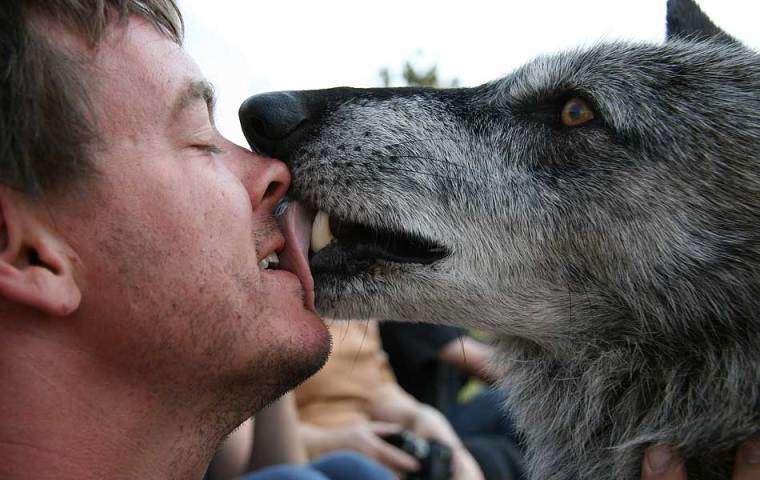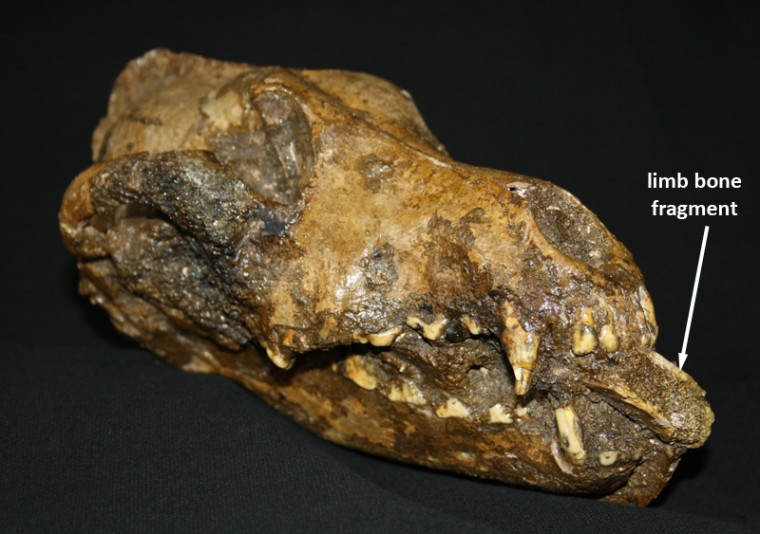Wolves and dogs are interfertile and the mating of a domestic dog with a wolf results in fertile offspring, unlike the case with hybrids of horse and donkey, lion with tiger etc. This suggests that both canids are so closely related that domestication of wolves led to the entire range of dog breeds shown at Crufts every year. The question is, “When did humans first domesticate wolves”? Provided the instinctive ‘rules’ of wolves are followed by a human a wolf pup can become a pet, if it is taken from its mother between 14 and 21 days after birth. But, not only are they expensive to feed on raw meat, they may well attack a stranger as they would in the wild go for a wolf from another pack. They are often loyal and playful towards whoever raised them, but are strictly ‘one-person’ animals, and difficult to train because they easily become bored. Taming wolf puppies and deliberate selection is one route to domestication and the first dogs, another being ‘self-domestication’ when wolves become dependent on humans for a share in food.

Comparison of wolf (Canis lupus) and domestic dog (Canis familiaris) genomes suggest an age of divergence for the two populations may have occurred between 20 to 60 thousand years ago. Indeed the DNA of wolf remains from Siberia showed it to belong to a wolf population whose descendants contributed to domestication of sledge dogs, such as Greenlandic huskies and Alaskan malemutes. Yet this approach is difficult and the results uncertain. Discovery of canid skulls associated with the remains of humans and mammoths at a 28.5 ka old site in the Czech Republic seems to have resolved both a minimum age for domestication and how it was achieved (Prassack, K.A. et al. 2020. Dental microwear as a behavioral proxy for distinguishing between canids at the Upper Paleolithic (Gravettian) site of Předmostí, Czech Republic. Journal of Archaeological Science, v. 115, published online; DOI: 10.1016/j.jas.2020.105092).
The Předmostí canids show two skull shapes: one with long jaws like wolves, the other with shorter, more dog-like jaws. Kari Prassack of the US National Park Service and colleagues from the USA, the Czech Republic and Belgium, turned to dental micro-wear patterns to resolve differences between the two groups as regards diet. Teeth from the more wolf-like group showed wear patterns consistent with a diet dominated by raw flesh, whereas the short-jawed canids ate mainly hard, brittle foods, probably bones. A truly remarkable find at the site was a near-complete canid skull of the short-jawed type, with a bone between its front teeth. Could this be a sign of a carefully buried pet ‘proto-dog’?
Earlier studies of the Předmostí canids included isotopic analyses of their bones, and those of associated humans. Interestingly, the more wolf-like group and the humans had diets dominated by mammoth flesh. The possible proto-dogs had focused on reindeer and other prey, as had the lions whose bones also occur at the site. This further complicates interpretation. Did both wolves and proto-dogs accompany the humans, the first being fed with mammoth meat that they helped bring down, while the second were fed scraps from smaller, more commonly killed prey? Perhaps the early dogs developed over a long period as scavengers on the kills of lions, and then became associates of humans. Yet neither canid would find a mammoth easy prey, even hunting in packs. So did the ice-age hunters have two companion animals, perhaps one to help in hunting mammoth, the other for more day-to-day hunting, which became more domesticated and even kept as pets? As the authors conclude; more data are needed.
See also: Dog domestication during ice age (Science Daily)


Have you seen the film ‘The Company of Wolves?
https://en.wikipedia.org/wiki/The_Company_of_Wolves
It’s beyond me, why it’s referred to as a ‘horror’ film – I think it’s wonder-full.
I like Angela Carter’s writing, and the film was adapted from one of her stories.
It’s something people appear to forget – that inside the cutest, fluffiest little pooch, lies a wolf. This needs to be recognized, and they should be treated accordingly – with respect.
Wolves have been much maligned and given an undeservedly bad reputation.
Yes, I do like dogs – and wolves.
“For the strength of the wolf is the pack, and the strength of the pack, is the wolf.” – The Jungle Book – Rudyard Kipling
LikeLike